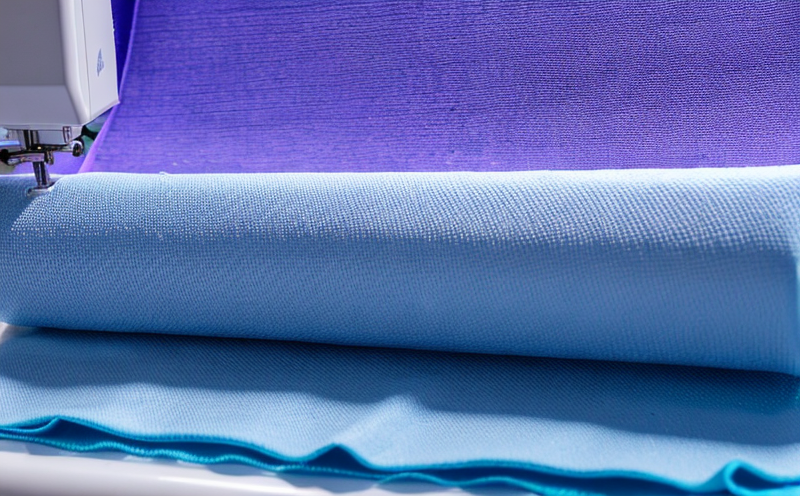UV degradation testing of textile materials under extreme conditions
The Importance of UV Degradation Testing for Textile Materials Ensuring Durability in Extreme Conditions
In the textile industry, ensuring the durability and longevity of fabrics is crucial to maintaining product quality and customer satisfaction. However, textiles are often exposed to harsh environmental conditions, including intense sunlight, which can cause damage to fibers and compromise material performance. This is where UV degradation testing comes into play a critical laboratory service that simulates real-world exposure conditions to assess textile materials resistance to ultraviolet (UV) radiation.
At Eurolab, we offer expert UV degradation testing of textile materials under extreme conditions, providing businesses with the confidence to develop high-quality products that withstand the rigors of outdoor and indoor applications. In this article, we will delve into the importance of UV degradation testing, its benefits, and what you can expect from our comprehensive laboratory service.
What is UV Degradation Testing?
UV degradation testing involves exposing textile materials to controlled amounts of UV radiation in a laboratory setting, replicating the effects of prolonged sun exposure. This process allows for the evaluation of a materials ability to withstand color fading, strength loss, and other forms of degradation caused by UV light.
Why is UV Degradation Testing Essential for Businesses?
UV degradation testing is essential for businesses involved in textile production, as it helps ensure that products meet performance standards and customer expectations. Here are some key reasons why this laboratory service is crucial
Enhanced Product Quality By simulating real-world exposure conditions, UV degradation testing enables manufacturers to identify potential weaknesses in their materials and make informed decisions about product development.
Improved Customer Satisfaction Textiles that withstand UV radiation will maintain their appearance and performance longer, leading to increased customer satisfaction and loyalty.
Reduced Waste and Cost Savings Identifying material weaknesses early on can help minimize waste and reduce production costs associated with reworking or replacing defective products.
Advantages of Using UV Degradation Testing
Here are the key benefits of using UV degradation testing for textile materials
Improved Material Selection By assessing a materials resistance to UV radiation, manufacturers can make informed decisions about material selection, ensuring that their products meet performance standards.
Enhanced Product Performance Textiles that withstand UV radiation will maintain their appearance and performance longer, leading to improved product quality and customer satisfaction.
Reduced Risk of Material Failure By identifying potential weaknesses in materials, manufacturers can take proactive measures to mitigate the risk of material failure, reducing the likelihood of costly reworks or replacements.
Compliance with Industry Standards UV degradation testing helps ensure compliance with industry standards and regulations, such as those set by the International Organization for Standardization (ISO) and the American Society for Testing and Materials (ASTM).
Informed Decision-Making By providing objective data on material performance, UV degradation testing enables manufacturers to make informed decisions about product development, material selection, and production processes.
What Can You Expect from Eurolabs UV Degradation Testing Service?
At Eurolab, our expert laboratory technicians use state-of-the-art equipment to simulate real-world exposure conditions, replicating the effects of intense sunlight on textile materials. Our comprehensive service includes
UV Light Sources We utilize high-intensity UV light sources to simulate the effects of prolonged sun exposure.
Environmental Control Our laboratories maintain precise temperature and humidity control to replicate real-world conditions.
Material Sampling We carefully sample textiles for testing, ensuring accurate and reliable results.
Data Analysis Our experienced technicians analyze data from our tests, providing detailed reports on material performance.
QA Frequently Asked Questions about UV Degradation Testing
Here are some frequently asked questions about UV degradation testing
What types of textile materials can be tested?
We test a wide range of textile materials, including fibers, yarns, fabrics, and finished products.
How long does the testing process take?
The length of time required for testing depends on the specific requirements of your project, but typically ranges from 1-6 weeks.
What are the benefits of UV degradation testing for manufacturers?
By simulating real-world exposure conditions, UV degradation testing enables manufacturers to identify potential weaknesses in their materials and make informed decisions about product development.
Can UV degradation testing be performed on small-scale samples?
Yes, our laboratory can test small-scale samples to ensure accuracy and reliability.
Conclusion
UV degradation testing is a critical laboratory service that helps businesses develop high-quality products that withstand the rigors of outdoor and indoor applications. At Eurolab, we offer expert UV degradation testing of textile materials under extreme conditions, providing manufacturers with the confidence to meet performance standards and customer expectations. By choosing our comprehensive laboratory service, you can ensure the durability and longevity of your textiles, reducing waste, cost savings, and improving customer satisfaction.
Dont let material failure compromise your products quality or reputation. Contact us today to learn more about Eurolabs UV degradation testing services and take the first step towards developing high-quality products that meet the demands of extreme conditions.




